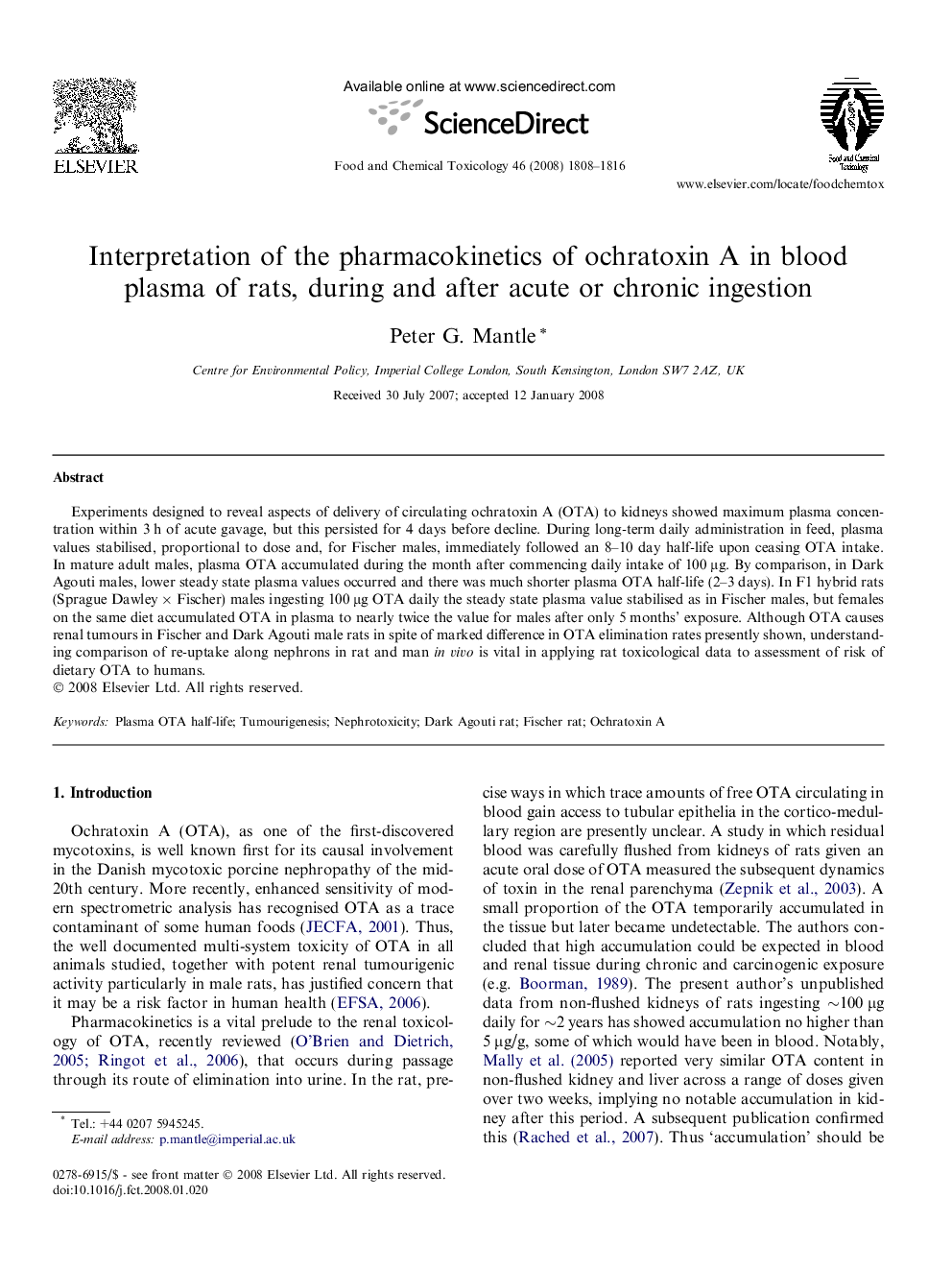| Article ID | Journal | Published Year | Pages | File Type |
|---|---|---|---|---|
| 2587485 | Food and Chemical Toxicology | 2008 | 9 Pages |
Experiments designed to reveal aspects of delivery of circulating ochratoxin A (OTA) to kidneys showed maximum plasma concentration within 3 h of acute gavage, but this persisted for 4 days before decline. During long-term daily administration in feed, plasma values stabilised, proportional to dose and, for Fischer males, immediately followed an 8–10 day half-life upon ceasing OTA intake. In mature adult males, plasma OTA accumulated during the month after commencing daily intake of 100 μg. By comparison, in Dark Agouti males, lower steady state plasma values occurred and there was much shorter plasma OTA half-life (2–3 days). In F1 hybrid rats (Sprague Dawley × Fischer) males ingesting 100 μg OTA daily the steady state plasma value stabilised as in Fischer males, but females on the same diet accumulated OTA in plasma to nearly twice the value for males after only 5 months’ exposure. Although OTA causes renal tumours in Fischer and Dark Agouti male rats in spite of marked difference in OTA elimination rates presently shown, understanding comparison of re-uptake along nephrons in rat and man in vivo is vital in applying rat toxicological data to assessment of risk of dietary OTA to humans.
